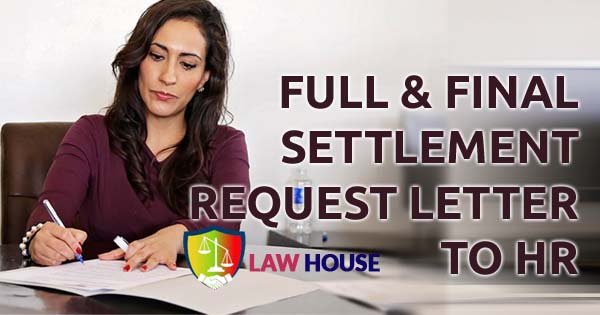Introduction
In this article, we will learn how to Write an Effective Full and Final Settlement Letter
Are you leaving your current job and need to write a Full and Final Settlement Letter?
This important document outlines the details of your final payment, including any outstanding dues, bonuses, or leave payments. Writing a clear and concise full and final settlement letter can help you avoid any misunderstandings or disputes with your employer.
Plan and Organize Your Thoughts
Here are some tips for writing an effective Full and Final Settlement Letter:
Start with a clear and professional tone: Begin your letter with a professional greeting and a clear statement of purpose. Make sure to include your name, employee ID, and any other relevant information.
Include a detailed breakdown of payments: Your letter should include a detailed breakdown of all payments you are owed, including any outstanding dues, bonuses, or leave payments. Be sure to double-check all calculations and make sure the information is accurate.
Keep it concise: While it’s important to include all necessary information, try to keep your letter concise and to the point. Avoid adding unnecessary details or information that may confuse the reader.
Use a sample letter template: If you’re not sure where to start, use a sample letter template as a guide. This can help ensure that you include all the necessary information and that your letter is formatted correctly.

Download full and final settlement letter template
Proofread and edit: Before sending your letter, be sure to proofread and edit it for spelling and grammar errors. This can help ensure that your letter is professional and error-free.
FAQs
Do I need to include a reason for leaving in my Full and Final Settlement Letter?
No, it’s not necessary to include a reason for leaving in your letter. Stick to the facts and keep your letter professional.
Can I negotiate my final payment with my employer?
It’s possible to negotiate your final payment with your employer, but it’s important to do so in a professional and respectful manner. Be sure to make a clear case for why you deserve additional payment and be willing to compromise if necessary.
How long should I wait for my Full and Final Settlement payment?
This can vary depending on the company and the circumstances. Generally, you should receive your payment within a few weeks of submitting your letter. If you don’t receive a payment within a reasonable amount of time, follow up with your HR department.
What should I do if I don’t receive a response to my Full and Final Settlement Letter?
If you don’t receive a response to your letter, follow up with HR after a week or so. You can also send a reminder email or letter.
Can I negotiate the settlement amount?
In some cases, you may be able to negotiate the settlement amount with HR. However, it is important to be reasonable and not demand an unrealistic amount.
What happens if I don’t receive my Full and Final Settlement?
If you don’t receive your Full and Final Settlement, you may need to seek legal advice and take legal action against your employer.
Can I request a Full and Final Settlement if I am terminated?
Yes, you can request a Full and Final Settlement if you are terminated. However, the settlement amount may be lower than if you resigned.
Conclusion
In conclusion, writing a Full and Final Settlement Letter is an important step in ensuring that you receive the correct settlement amount from your employer. By following the tips and steps outlined in this article, you can write an effective letter that increases the chances of receiving your settlement in a timely manner. Remember to keep a copy of the letter for your records and follow up with HR if you don’t receive a response within a reasonable timeframe.
-
Previous Post
Ultimate Guide of General Power of Attorney
